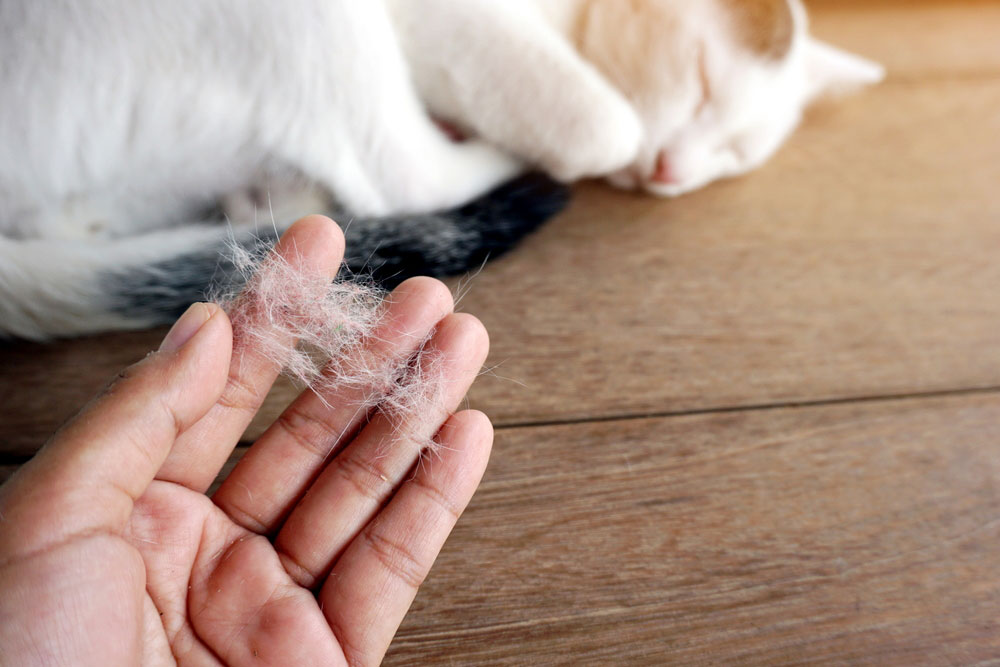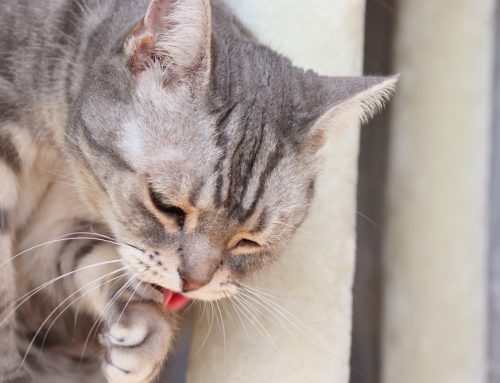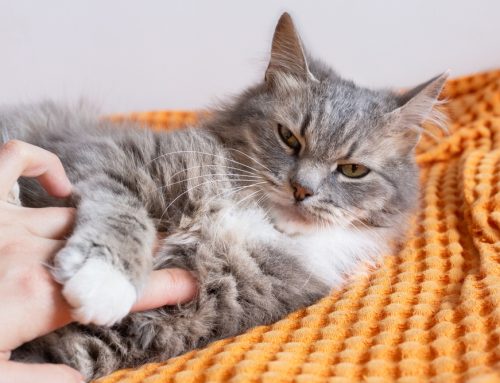Restoring Your Pet’s Coat: Understanding Animal Hair Loss
A healthy, shiny coat reflects a pet’s internal health and overall wellness. When hair begins to thin or bald spots appear, it often points to a deeper issue that needs attention. Hair loss, known as alopecia, can be triggered by a range of factors including allergies, parasites, hormonal imbalances, stress, or underlying medical conditions. Identifying the root cause through veterinary evaluation is the first step toward effective treatment and restoring your pet’s comfort.
At Tidmore Veterinary Hospital in Northport, AL, we take a whole-body approach to pet skin and coat health. As an AAHA-accredited hospital, we meet the highest standards in veterinary medicine, ensuring accuracy, safety, and compassionate care at every step. Whether your pet’s hair loss is sudden or gradual, our diagnostic tools and integrative treatments, including Traditional Chinese Veterinary Medicine (TCVM), help uncover the cause and restore your pet’s comfort.
What Is Alopecia?
Alopecia refers to partial or complete hair loss that can develop slowly over time or appear almost overnight. While seasonal shedding is normal, patchy baldness, persistent itching, or changes in skin color or texture are not.
Hair loss (alopecia) in dogs can look different depending on the cause- ranging from symmetrical thinning on both sides of the body to inflamed, crusty bald spots. Recognizing that alopecia is a symptom rather than a condition helps frame why veterinary evaluation is crucial: the skin and coat often reflect what’s happening inside the body.
Why Allergies Are a Leading Cause of Alopecia in Pets
Allergies are one of the most common reasons pets lose hair. Dogs and cats can develop sensitivities to environmental allergens such as pollen, mold, or dust mites, as well as to ingredients in food or even flea saliva.
Dog allergies and their symptoms often include red, inflamed skin, recurrent ear infections, and constant paw licking. Cats frequently respond with excessive grooming, especially on the belly, legs, and back, leading to thinning or bald patches.
Allergy management may involve dietary trials, prescription medications, medicated shampoos, and flea control. While finding the trigger can take time, patience and veterinary guidance make lasting relief possible.
Parasites and Infections That Cause Hair Loss in Pets
External parasites and fungal infections often damage hair follicles directly, resulting in patchy, inflamed skin. Even pets that live indoors can be exposed.
Flea allergy dermatitis is a leading cause of parasite-related allergies. Just one bite can lead to extreme itchiness, especially around the tail and rear legs. Even if you don’t see fleas, they can be a cause of allergic skin inflammation. The importance of year-round parasite prevention for pets cannot be overstated: preventing infestations is far easier and safer than treating the aftermath.
Spotting and treating mites requires specialized diagnostics such as skin scrapings or cytology. Demodex mites live in hair follicles, causing localized hair loss around the face or paws, while Sarcoptes mites burrow into the skin, producing severe itching and scabbing. Ringworm, a contagious fungal infection, causes circular bald spots with scaly edges. It can spread easily to other pets and even people, so prompt diagnosis and treatment are vital.
At Tidmore Veterinary Hospital, we use in-house diagnostics to detect infections and parasites quickly. This allows treatment to begin immediately, minimizing discomfort and reducing the risk of spread.
When Hormones Affect Your Pet’s Coat
Endocrine disorders can cause distinctive, non-itchy hair loss. Unlike allergies or parasites, these conditions develop gradually and are often symmetrical.
- Hypothyroidism in dogs is common in middle-aged dogs, leading to thinning fur, weight gain, and darkened skin. Fortunately, thyroid supplementation restores normal hormone balance and regrows a healthy coat within a few months.
- Cushing’s disease in dogs causes excess cortisol production, leading to thin skin, muscle loss, and progressive baldness. Treatment may include medication or surgery, depending on the cause.
- Unneutered males can also develop testicular tumors in dogs that produce estrogen, resulting in symmetrical hair loss and changes in behavior.
- Human topical hormone therapies can cause hair loss in pets if your pet licks it off your skin or you pet your dog or cat without washing your hands after application.
Routine blood work helps identify these hormone-driven issues before symptoms worsen. The importance of blood work for your dog lies in its ability to reveal imbalances and organ function early, guiding precise and effective treatment.
Breed-Related and Genetic Hair Loss in Pets
Some breeds inherit coat conditions that cause thinning hair independent of illness.
- Color dilution alopecia affects dogs with dilute coat colors, causing fragile, brittle hairs that break easily.
- Canine flank alopecia leads to seasonal bald patches that may regrow on their own.
Although genetic conditions can’t be cured, supportive care, including gentle grooming, moisturizing shampoos, and omega-3 fatty acid supplements, helps maintain skin health and minimize breakage.
Stress, Anxiety, and Overgrooming in Pets
Hair loss isn’t always medical, it can also be behavioral. Cats are particularly prone to psychogenic alopecia, a compulsive overgrooming response to stress or environmental change.
Feline life stressors such as new pets, moving homes, or altered routines often trigger this behavior. The resulting bald spots typically appear along the belly, thighs, or flanks, with otherwise healthy-looking skin.
Managing stress involves enriching your cat’s environment, maintaining predictable routines, and encouraging positive outlets for play. In some cases, pheromone therapy or anti-anxiety medication can help.
Dogs can also develop stress-related licking, often on the legs or paws. For these pets, addressing anxiety through behavioral modification and environmental enrichment is key. Our veterinarians may also recommend integrating TCVM therapies such as acupuncture or herbal supplements to support emotional balance.
The Importance of Nutrition and Grooming for Your Pet
A healthy diet and proper grooming form the foundation of coat health. Pets lacking essential nutrients, especially fatty acids, amino acids, and vitamins, may develop brittle or thinning fur. Overbathing or using harsh products can further strip the skin’s natural oils.
Pets need regular grooming– consistent brushing removes debris, spreads natural oils, and strengthens the bond between you and your pet. Our veterinarians can also recommend nutritional supplements or skin-specific diets to promote coat regrowth and prevent future issues.
Veterinary Diagnostics: Finding the Root Cause of Pet Hair Loss
Pinpointing why a pet is losing hair requires systematic evaluation. Our team performs comprehensive dermatologic exams, taking into account the pattern of hair loss, history, and any associated symptoms.
Diagnostics may include:
- Skin scrapings to check for mites
- Cytology to identify bacteria or yeast
- Fungal cultures for ringworm
- Blood work to assess hormone levels and organ function
- Allergy testing or elimination diets
Our comprehensive services include both traditional and integrative care, from Western diagnostics to Traditional Chinese Veterinary Medicine (TCVM).
Treatment and Long-Term Management
Treatment always depends on the underlying cause:
- Allergies: Antihistamines, prescription diets, medicated baths, and immunotherapy
- Parasites: Preventive medication, antifungals, and thorough home cleaning
- Hormonal disorders: Hormone replacement, medication, or surgical treatment
- Behavioral causes: Stress reduction, enrichment, and, when needed, anti-anxiety therapy
- Nutritional issues: Diet improvement and supplements
Follow-up exams are essential to monitor progress and adjust treatment as your pet heals. In many cases, combining conventional care with TCVM and lifestyle adjustments produces faster, more complete results.

Helping Your Pet’s Coat Shine Again
Most causes of hair loss can be effectively treated with the right care plan. Whether the solution involves medication, acupuncture, herbal support, or a change in nutrition, our goal is to restore your pet’s comfort and confidence.
At Tidmore Veterinary Hospital, we blend compassion with expertise. Our AAHA accreditation reflects our commitment to exceptional standards of safety, medicine, and communication, so you can feel confident knowing your pet’s health is in expert hands.
If you notice bald spots, chronic itching, or changes in your pet’s coat, don’t wait. Request an appointment or contact us today. Together, we’ll find the cause and help your pet look and feel their very best.








Leave A Comment